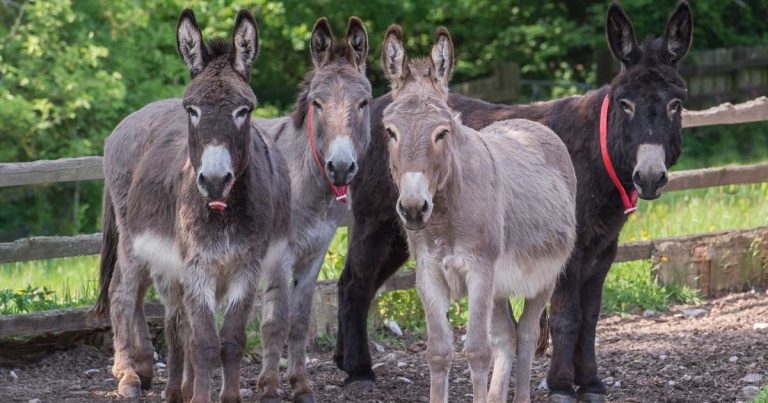15 Jun 2020
“Besnoitia bennetti can infect any members of the family Equidae – so horses, donkeys, mules and zebras are susceptible to infection by this parasite." – Hany Elsheikha, University of Nottingham.

Image: The Donkey Sanctuary.
Vets and equine owners must be vigilant to a debilitating parasitic disease confirmed in donkeys in the UK for the first time.
Veterinary scientists at the University of Nottingham have collaborated with The Donkey Sanctuary for a study on equine besnoitiosis, which manifests in multiple parasitic cysts on the skin, over the nostrils, and around the ears and face. Tiny cysts on the surface of the eye is also reported.
Besnoitiosis is transmitted by the protozoan parasite Besnoitia bennetti, and has been rarely seen in countries including the US, Spain, Belgium and Italy.
Following initial study of a donkey presenting with skin lumps at The Donkey Sanctuary similar to those from B bennetti, upwards of 20 clinical cases from the charity have since been identified and studied between 2013-19.
Hany Elsheikha, associate professor of veterinary parasitology at the University of Nottingham and lead author of the study in the journal Parasites and Vectors, said the findings were significant – for the UK’s donkeys and potentially its horses.
He said: “B bennetti can infect any members of the family Equidae – so horses, donkeys, mules and zebras are susceptible to infection by this parasite.
“Cases reported in horses seem to be limited to certain countries, such as Mexico and France, and parts of Africa. But given the right conditions for transmission of infection and the presence of the parasites, horses in any country could be at a risk of becoming infected.”
Dr Elsheikha added: “There is no reason to believe that this parasitic disease we detected in donkeys at The Donkey Sanctuary will not continue to infect donkeys in other regions in the UK in the future.
“This finding is crucial, because now we know about the problem, and we should remain vigilant for the emergence of any new cases.
“We need to know the source of infection. Is it a wildlife, another domestic species or even an insect? It remains uncertain how the Besnoitia parasite entered the UK, because none of the donkeys surveyed had a travel history, or were imported or rescued from abroad.”
Dr Elsheikha confirmed limited treatment options were available, and vets needed to be vigilant given the uncertainty over the means of transmission.
He said: “A missing factor in the investigation we conducted, and in all previous investigations about this parasitic disease, is the route of transmission.
“This parasite must complete its development inside two different hosts – one of them is the donkey, commonly called the intermediate host, and the other that plays the role of the definitive host could be any animal species.
“Numerous vertebrate species may be involved in Besnoitia transmission to donkeys, and finding out which animal(s) is the definitive host and elucidating its role in the transmission of infection to donkeys is probably going to be a complex challenge.”